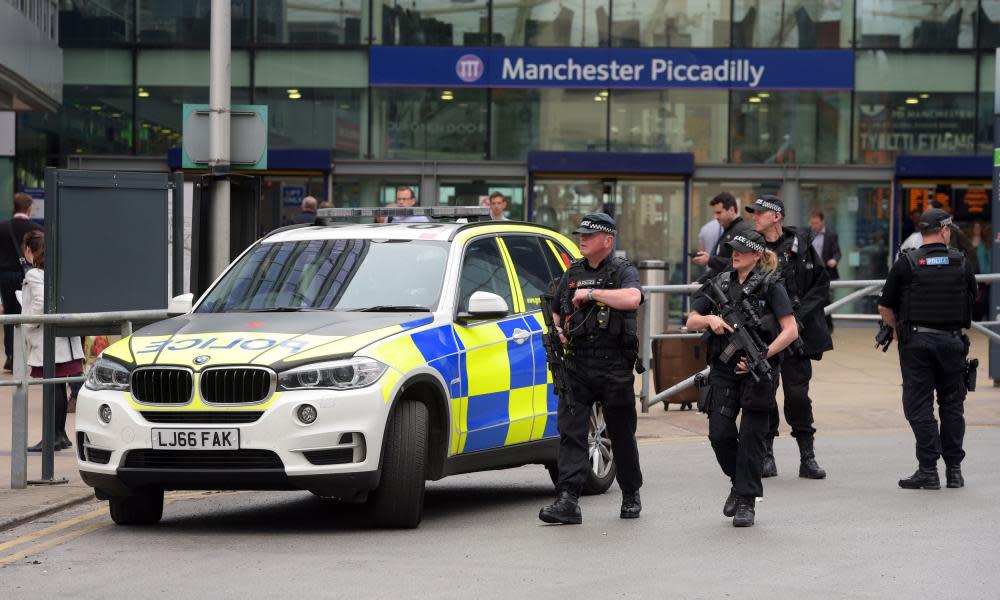Seven Manchester attack victims named, as troops take to streets

The names of seven of the 22 victims of the Manchester concert attack have been revealed as troops are deployed to streets after the government raised the UK terrorist threat level to critical for the first time since July 2007.
Friends Alison Howe and Lisa Lees were killed by a suicide bomber in the foyer of the Manchester Arena as they were waiting to collect their 15 year-old-daughters from the Ariana Grande concert. Their daughters survived.
Lee Hunter, Lisa Lees’s brother, wrote on Facebook: “For those who don’t know, Lisa is gone but never, ever forgotten.”
Jordan Howe confirmed his stepmother had died. “She was amazing to us all x love you loads Alison Howe,” he wrote on Facebook.
Overnight, the families of 15-year-old Olivia Campbell and 32-year-old Kelly Brewster confirmed they had both died in the attack. On Tuesday the first victims to be named were 18-year-old Georgina Callander, eight-year-old Saffie Rose Roussos and 28 year old John Atkinson.
The Polish foreign minister said that “at least two Polish nationals” were killed in the attack but did not confirm their names.
20 people remain in “critical care” across Manchester with people suffering
from “horrific injuries” including major organ damage and potential loss of
limbs, Jon Rouse of the Greater Manchester Health and Social Care Partnership
has said.
The identities of the dead were confirmed as Scotland Yard said that soldiers would help guard Buckingham Palace, Downing Street, foreign embassies and the Palace of Westminster after the threat level was increased to critical on Tuesday night.
The Met added there would be more stop and search and vehicle check points. A Met statement said: “As a highly visible deterrent and disruptive tactic, officers will be making more use of stop and search, vehicle checkpoints and automatic number plate recognition (ANPR) technology.”
The home secretary, Amber Rudd, told Sky News that “people are likely to see some military on the streets”.. The move is intended to free up armed officers for counter-terrorism operations.
The extremist group Isis put out a claim of responsibility for the attack on its messaging service, but there has been no evidence for the claim.
Mark Rowley, the head of national counter-terrorism policing, said police were conducting a number of searches to try to establish whether the suspected bomber, Salman Ramadan Abedi, worked alone or was part of a network.
Manchester police arrested a 23-year-old man in Chorlton, south Manchester near an address where Abedi’s family had previously lived.
In a statement on Wednesday morning, Rowley said: “The investigation into the terrorist attack in Manchester is large-scale, fast-moving and making good progress. There has been an arrest and there are currently multiple searches and other activity taking place as I speak.”
He added: “However, at this stage it is still not possible to be certain if there was a wider group involved in the attack; 24 hours in we have a number of investigative leads that we are pursuing to manage the ongoing threat.”
The Manchester police deputy chief constable, Ian Pilling, said the decision to up the threat level to critical would help the investigation into the attack. He said: “People across Greater Manchester have seen an increased police presence throughout the day and this will continue. They will be seen at key locations across the region.”
The Guardian understands that Salman Abedi’s father, Abu Ismail Abedi, is thought to be in Tripoli.
The government will hold its third emergency Cobra meeting since the blast at 9.30am.

 Yahoo News
Yahoo News 
